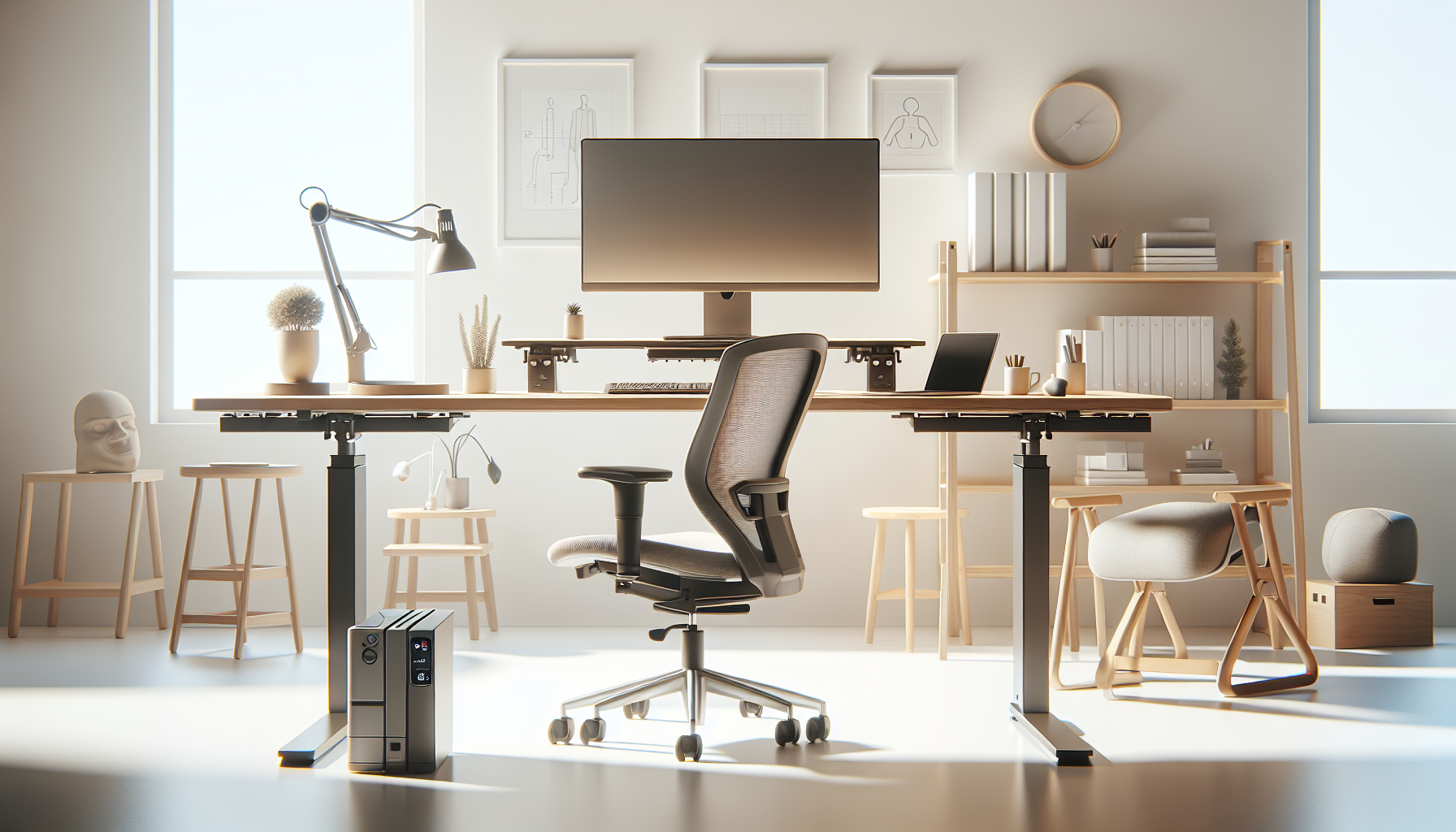Standing Desks and Ergonomic Solutions for Healthier Workspaces
 Standing desks have gained immense popularity as a vital ergonomic solution, promising healthier and more dynamic workspaces. The shift away from traditional seating arrangements is fueled by increasing awareness of the health risks associated with prolonged sitting. Sedentary lifestyles, often exacerbated by sitting for extended periods at work, are linked to various health issues such as obesity, cardiovascular disease, and musculoskeletal disorders. Standing desks, along with other ergonomic solutions, aim to mitigate these risks and promote overall well-being.
Standing desks have gained immense popularity as a vital ergonomic solution, promising healthier and more dynamic workspaces. The shift away from traditional seating arrangements is fueled by increasing awareness of the health risks associated with prolonged sitting. Sedentary lifestyles, often exacerbated by sitting for extended periods at work, are linked to various health issues such as obesity, cardiovascular disease, and musculoskeletal disorders. Standing desks, along with other ergonomic solutions, aim to mitigate these risks and promote overall well-being.
One of the primary benefits of standing desks is their potential to reduce the adverse effects of prolonged sitting. Research suggests that standing instead of sitting can help improve posture, alleviate back pain, and decrease the risk of chronic health conditions. By encouraging movement, standing desks help in burning more calories, which can combat weight gain effectively. For professionals working long hours at a desk, switching between sitting and standing positions can also enhance focus and productivity by preventing the physical fatigue associated with static postures.
Adjustability is a critical feature in standing desks, allowing users to switch between standing and seated positions seamlessly. Height-adjustable desks cater to a diverse range of body types and preferences, ensuring that individuals maintain ergonomic postures throughout the workday. When set to the correct height, standing desks can help maintain a neutral spine position, reducing strain on the neck, shoulders, and lower back. To maximize these benefits, desk height should allow the elbows to remain at a 90-degree angle with the wrists in a neutral position, and monitors should be at eye level, about an arm’s length away.
Complementing standing desks with ergonomic accessories can further enhance workplace health. Anti-fatigue mats are a popular addition, providing cushioning and promoting subtle muscle movements that reduce fatigue and improve circulation. Ergonomic footrests and balance boards are also useful, encouraging regular motion and maintaining comfort while standing. Incorporating these tools can ensure that standing remains a beneficial endeavor rather than a source of discomfort or fatigue.
Furthermore, the integration of regular movement and exercise into the work routine is crucial. While standing desks promote movement, it’s important to incorporate regular breaks, stretching, and ergonomic exercises to maximize the health benefits. Simple stretches focused on the neck, shoulders, and back can alleviate tension and prevent strain. Additionally, a quick walk or a series of body-weight exercises every hour can refresh the mind and body, enhancing productivity and focus.
Lighting and acoustics are also significant aspects of an ergonomic workspace. Adequate lighting reduces eye strain, while noise reduction techniques can minimize distractions, fostering a more productive environment. Positioning the desk near natural light sources and using task lighting can create an inviting and focused work area. Acoustically treating the room or using noise-canceling headphones can further enhance concentration by creating a quieter setting.
Implementing ergonomic chairs alongside standing desks maintains a balance between sitting and standing. When choosing an ergonomic chair, consider adjustable features such as seat height, backrest angle, and armrest positioning to support the natural curve of the spine. An ergonomic chair should provide sufficient lumbar support, reducing stress on the lower back during seated periods.
Keyboard and mouse placement significantly influences comfort levels. An ergonomic keyboard and mouse align more naturally with the body’s mechanics, reducing strain on the wrists and arms. Keeping these peripherals close and at elbow height ensures a neutral wrist position, minimizing the risk of repetitive strain injuries such as carpal tunnel syndrome.
Finally, fostering a culture that supports ergonomic practices is essential in promoting long-term health benefits. Encouraging employees to prioritize their well-being and providing resources for ergonomic education can lead to healthier habits and a more engaged workforce. Workshops, training sessions, and ergonomic assessments can enhance awareness and commitment to ergonomic excellence.
In summary, standing desks and ergonomic solutions provide transformative benefits for healthier workspaces. By incorporating adjustable furniture, ergonomic accessories, and an active lifestyle, individuals can reduce health risks, improve comfort, and enhance productivity. As workplaces evolve, integrating these practices will play a crucial role in fostering a thriving, health-conscious workforce.






